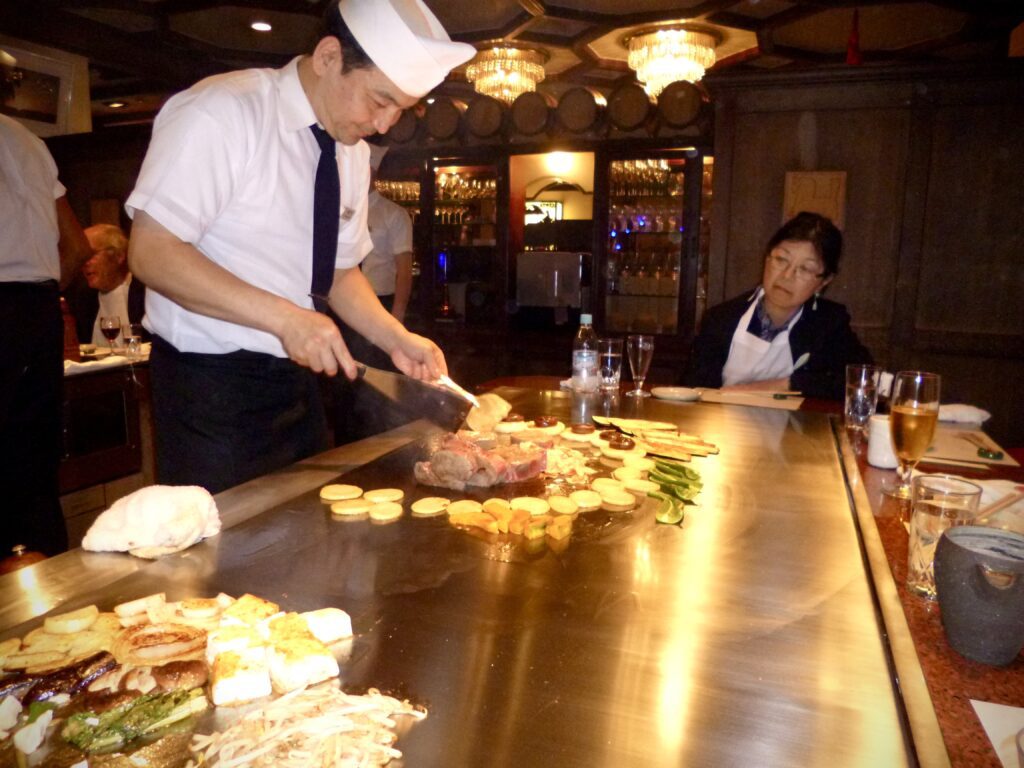Cook in front of you: The Ultimate Culinary Experience
Teppanyaki and hibachi are both popular Japanese cooking styles that involve grilling over a metal plate. Teppanyaki chefs are trained to perform tricks like flaming an onion volcano. Common foods cooked on teppanyaki include shrimp, beef, chicken, and tofu, with sidings like grilled vegetables, fried rice, and noodles.
Hibachi grills have open grates and are typically made of wood or ceramic lined with metal. Some hibachi chefs also perform tricks like teppanyaki chefs.
The main difference between teppanyaki and hibachi is the characteristics of their cooking plates. Teppanyaki uses a solid, flat iron griddle heated with propane, while hibachi traditionally uses circular grills made of wood or ceramic lined with metal. Hibachi grills can also be smaller and portable compared to teppanyaki griddles.
The Japanese Korean Ceramic Hibachi BBQ Table Grill from Amazon is praised for its ability to deliver searing heat and infuse food with a charcoal flavor. The grill is small, portable, easy to store, and cleaning is not a chore. The hibachi grill is compact, portable, and easy to store, and requires no assembly. It comes with a pair of tongs and a stand. The hibachi pot is ceramic with a stainless steel grill plate, and has a double air vent to control heat.
Hibachi grills have similar cooking times to regular barbecues. They can be used for thin cuts/small cubes and slices of meat, as well as thicker cuts like steak if the size and shape of the meat are suitable. Thicker cuts may require extended cooking time and more frequent turning to prevent burning. Brushing fish with oil can prevent it from sticking to the grill plate.
The hibachi grill is easy to use, portable, and doesn’t require assembly. It takes around 30 minutes to heat the charcoal before placing it in the grill. Binchotan, a Japanese charcoal, is recommended for this type of grilling as it brings out the natural flavor of the food and allows for better heat control. Binchotan can be reused several times. Regular charcoal may produce a stronger smoky flavor and more smoke.
The hibachi grill is easy to clean, with the clay pot requiring no cleaning and the grill plate easily fitting in a sink or dishwasher. The hibachi should be stored indoors or well covered when not in use.
The price of hibachi grills can range from $60 to $800, depending on the size and brand. The article also mentions that a hibachi grill priced at $69 impressed testers, but points out the ongoing cost of buying binchotan charcoal.
Continue Reading